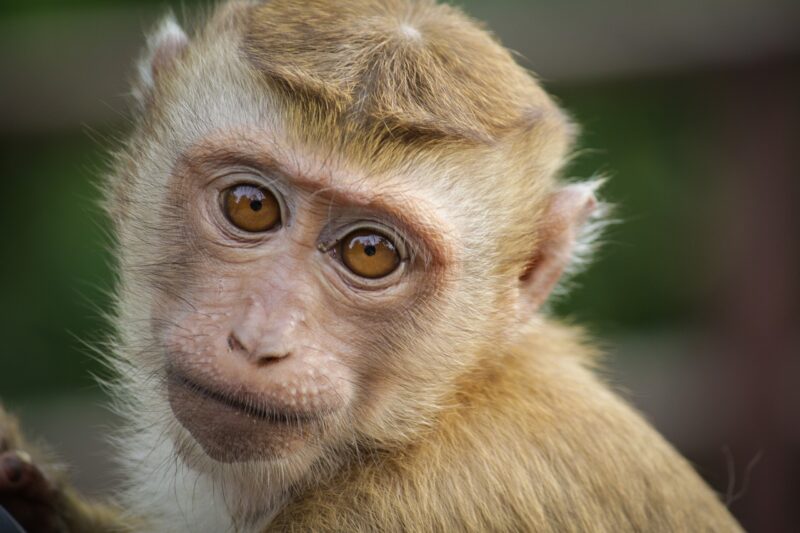How Monkeys Use Their Sense of Smell, Sight, and Hearing to Navigate the Wild
November 14, 2024

Monkeys are fascinating creatures that possess remarkable adaptations that allow them to thrive in diverse environments. One of the keys to their survival is their extraordinary sensory capabilities, particularly their sense of smell, sight, and hearing. In this article, we will explore how monkeys utilize these senses to navigate their natural habitats, find food, communicate with each other, and avoid predators.
1. The Importance of Sensory Perception in Monkeys
Sensory perception allows monkeys to gather vital information about their environment, helping them adapt to various ecological niches. With over 260 species of monkeys around the world, each species has developed unique ways of utilizing their senses. The ability to see, hear, and smell gives them an advantage in finding food, communicating with their groups, and detecting threats.
2. Smell: The Underappreciated Sense
While many people believe that primates rely heavily on their vision, the sense of smell plays a significant role in how monkeys interact with their environment. Monkeys have a complex olfactory system that helps them identify food sources, detect predators, and establish social bonds.
2.1 Finding Food
Monkeys are primarily frugivorous, meaning they eat a diet rich in fruits. Their keen sense of smell allows them to locate ripe fruits, nuts, and seeds from significant distances. Species such as the spider monkey rely on their olfactory abilities to differentiate between fruits and discern which are ripe, ensuring they have access to nutritious food.
Furthermore, some monkeys, like the capuchin monkey, utilize their sense of smell to identify insects and other small animals. Their olfactory skills help them assess food quality and choose the most nutritious options.
2.2 Detecting Predators
Predation is a constant threat for monkeys, and their sense of smell plays an essential role in avoiding danger. By detecting the scents of nearby predators, monkeys can react quickly and escape from potential harm. Some species, such as the howler monkey, can even detect the scent of approaching jaguars or snakes, alerting the troop to potential threats.
2.3 Social Interactions and Bonds
Smell is also vital for social aspects of monkey life. Monkeys use pheromones to communicate reproductive status, social hierarchy, and identity. For instance, female macaques release specific scents during their estrus cycle, which signals their reproductive readiness to males. This olfactory communication fosters bonding among groups and assists in maintaining social structures.
3. Sight: Vision in the Wild
Vision is arguably the most acute sense for many monkey species. Monkeys have evolved to possess color vision, enabling them to identify ripe fruits and fresh leaves against their green surroundings, which is crucial for foraging. Their forward-facing eyes allow depth perception and a wide field of view, optimizing their ability to navigate the treetops.
3.1 Color Vision and Foraging
Monkeys are among the few non-human primates that have trichromatic color vision. This adaptation gives them the ability to perceive a range of colors, allowing them to distinguish between different fruits and flowers. The ability to discern subtle color changes is essential in identifying ripe versus unripe fruits, thus maximizing their foraging efficiency.
3.2 Social Interactions and Warning Signals
Monkeys often communicate visually using facial expressions and body postures. For example, a wide-open mouth can indicate aggression, while a relaxed posture may suggest submission. Their keen eyesight allows them to interpret these signals, enhancing group cohesion and minimizing conflicts. Additionally, quick visual signalling helps monkeys warn each other about nearby dangers, using gestures and vocalizations to alert the troop.
3.3 Navigating with Precision
Monkeys are adept climbers, relying on their exceptional vision to navigate the complex three-dimensional arboreal environment. They can quickly assess distances between branches, judge potential obstacles, and accurately leap from tree to tree. This spatial awareness is fundamental for avoiding falls and efficiently moving through the canopy in search of food and shelter.
4. Hearing: The Sound of Survival
Hearing is another critical sense for monkeys, aiding in communication, predator detection, and social interactions. Different species have adapted their vocalizations to suit their specific needs and environments.
4.1 Vocal Communication
Monkeys produce a range of vocalizations, including screams, whistles, and barks, each serving a unique purpose. For instance, the howler monkey is known for its distinctive howl, which can travel over a mile through dense forest. This vocalization serves to defend territory and warn neighboring groups of their presence.
Other species use soft chatters and calls to maintain contact and coordinate movements within their group while foraging. The varied vocal repertoire increases their chances of successfully navigating their environment and enhancing cooperative behaviors.
4.2 Predator Detection
Monkeys rely on their acute sense of hearing to detect the sounds of potential predators. By identifying rustles in leaves or the sound of a branch snapping, they can confirm when a threat is nearby. The ability to hear these subtle cues allows them to react swiftly, either by escaping or preparing for a defensive stance. Some monkeys develop alarm call systems where specific sounds correspond to various types of predators, informing group members of the nature of the threat.
4.3 Social Cohesion and Group Dynamics
Hearing facilitates social interactions among monkeys, helping groups stay coordinated while traveling. The ability to hear calls and communicate ensures that members do not stray far from the group, enhancing survival rates for young and vulnerable individuals.
5. Conclusion: The Integration of Senses in Navigation
The successful navigation of wild environments by monkeys is a masterful integration of their senses. Smell, sight, and hearing work in harmony to provide critical information that helps them locate food, communicate with their peers, and evade predators. This sophisticated sensory perception has evolved over millions of years, highlighting the adaptability and resilience of these remarkable creatures. Understanding how monkeys use their senses not only enhances our appreciation for their biology but also emphasizes the importance of conserving their habitats to ensure their survival in the wild.
As we learn more about the sensory capabilities of monkeys, we unlock insights into their behavior, survival strategies, and the ecological roles they play in their ecosystems. By protecting their environments and fostering a deeper understanding of their needs, we can help ensure that future generations will continue to appreciate these mesmerizing beings in their natural habitats.






